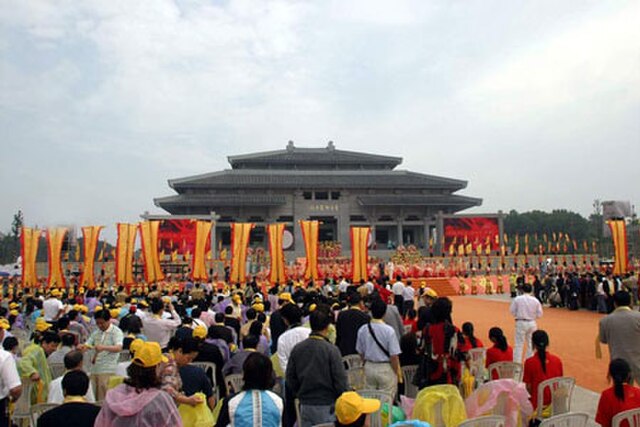Growth of religion involves the spread of individual religions and the increase in the numbers of religious adherents around the world. In sociology, desecularization is the proliferation or growth of religion, most commonly after a period of previous secularization. Statistics commonly measure the absolute number of adherents, the percentage of the absolute growth per-year, and the growth of converts in the world.
Phap Hoa Temple, a Buddhist temple in Adelaide, Australia. Buddhism is the fastest-growing religion by percentage in Australia.
Public worship ceremony at the Temple of Shennong-Yandi, in Suizhou, Hubei
Sacred Heart Church [fr] in Tibet: The number of Chinese Christians has increased significantly; from 4 million before 1949 to 67 million in 2010.
Notre-Dame de Paris: Christianity is still the largest religion in Western Europe (71% in 2018).
In sociology, desecularization is a resurgence or growth of religion after a period of secularization. The theory of desecularization is a reaction to the theory known as the secularization thesis, which posits a gradual decline in the importance of religion and of religious belief itself, as a universal feature of modern society. The term desecularization was coined by Peter L. Berger, a former proponent of the secularization thesis, in his 1999 book The Desecularization of the World.
Demonstration during the Iranian Revolution. The banner reads: We want an Islamic government, led by Imam Khomeini.
Max Weber
Peter L. Berger
Cathedral of Christ the Saviour in Moscow, Russia



![Sacred Heart Church [fr] in Tibet: The number of Chinese Christians has increased significantly; from 4 million before 1949 to 67 million in 2010.](https://upload.wikimedia.org/wikipedia/commons/thumb/8/8a/Catholic_Church_Cizhong_Yunnan_China.jpg/422px-Catholic_Church_Cizhong_Yunnan_China.jpg)




